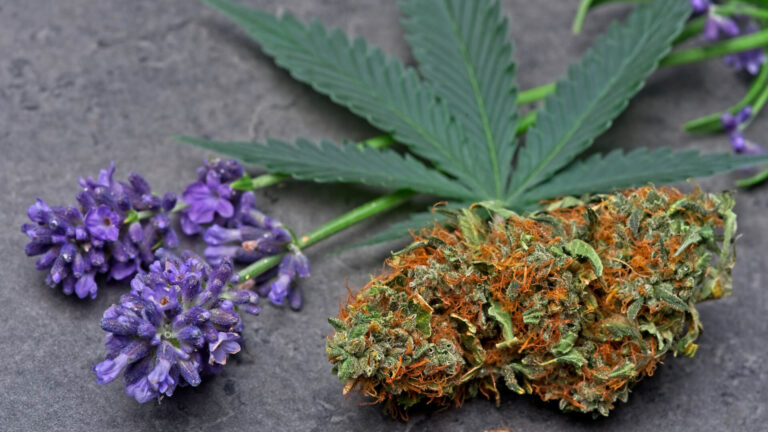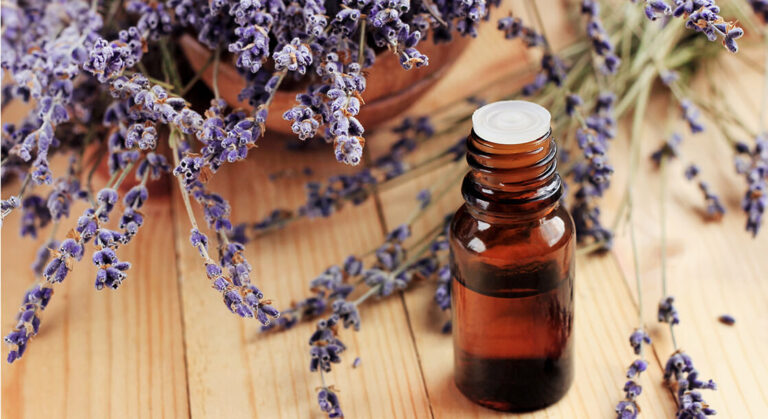What is a linalool terpene?
If you’re consuming cannabis then you’ve most likely heard of terpenes like the linalool terpene. A critical component of many plants and their essential oils, linalool is found in over 200 species of plants. Linalool is one of the most recognized terpenes, responsible for the distinctive scent of lavender. The question we’re answering today is, what is linalool, and what role does it play in the cannabis plant?
Linalool is one of the many terpenes produced by the cannabis plant. Unlike other compounds, it’s not exclusive to cannabis. It’s widely used in the perfume industry due to its pleasant floral scent. But the role of linalool isn’t just about smell. So, what does linalool do? It has been linked to a variety of potential therapeutic benefits, from anxiety relief to anti-inflammatory properties.
What is linalool chemotype?
A chemotype (or chemovar) refers to a plant’s chemical phenotype, meaning the composition of substances produced by the plant. In the case of the linalool terpene, the chemotype refers to the specific combination of terpenes and other compounds present in a plant that produces a high amount of linalool. The linalool smell, linalool taste, and linalool flavor are all part of its unique chemotype.
The linalool chemotype is characterized by a sweet, floral scent, often associated with lavender but also found in many other plants. This pleasant aroma contributes significantly to the linalool’s popularity in aromatherapy and the perfume industry.

Is linalool safe to consume?
Now that we have the answers to what is linalool and what does linalool do, the next question is, is it safe for human consumption? The good news is, yes, linalool is generally considered safe to consume. This is why it’s so widely used in food and beverage products for its distinctive flavor and aroma.
However, as with any substance, moderation is key. The potential benefits of linalool, such as anxiety and stress relief, are best achieved when it’s part of a balanced blend of terpenes and cannabinoids. This is where the linalool function shines, working synergistically with other compounds to enhance their effects.
START SHOPPING NOW
What plant contains the most linalool?
We’ve established that linalool is a common terpene found in many plants, but one stands out for its high linalool content, and that’s lavender. Lavender is renowned for its soothing properties as a result of its linalool function, which is why it is often used in aromatherapy for relaxation and stress relief. These beneficial effects are largely attributed to the linalool terpene present in lavender terpenes.
Although, linalool isn’t exclusive to lavender, which is why it’s found in cannabis. It’s also found in significant amounts in several types of mint, citrus fruits, and even some fungi. Each of these plants contributes to the diverse range of linalool flavors and functions we can enjoy today.
What does linalool smell like?
The linalool smell is easily one of the most recognizable in the world. It’s sweet, floral, and slightly spicy, reminiscent of fresh lavender fields on a warm summer day. This scent is why linalool is so widely used in perfumes, soaps, and other scented products.
Additionally, the aroma of linalool can also affect our mood and emotions. Studies have shown that exposure to linalool can lead to feelings of calmness and relaxation, supporting its use in stress relief and sleep aids. The scent can also enhance the taste of food and drinks, explaining why the linalool flavor is commonly found in culinary applications.
But it’s not just about the smell and flavor. The aroma of linalool also plays a role in its therapeutic effects. In aromatherapy, the scent of linalool-rich lavender terpenes is used to promote relaxation and alleviate stress. These therapeutic effects are not limited to humans. Linalool’s calming fragrance can be beneficial for pets too, making it a popular choice in pet care products.

What does linalool taste like?
Just as the linalool smell is highly recognizable in lavender terpenes, so too is its taste. The linalool taste is described as subtly sweet and floral, with a hint of spiciness. This unique combination of flavors makes it a popular ingredient in food and beverage products.
As with any terpene, the linalool flavor can vary depending on other compounds present. In cannabis strains high in linalool, for example, the taste can be more complex, influenced by the presence of other terpenes and cannabinoids.
What does the terpene linalool do?
So, what does linalool do exactly? Beyond its role in contributing to the aroma and flavor of many plants, the linalool terpene has several potential therapeutic benefits. It’s been studied for its anti-anxiety, anti-inflammatory, and even analgesic properties. Some research also suggests that it may have neuroprotective effects.
Interestingly, linalool is also believed to play a role in the ‘entourage effect’ observed in cannabis consumption, where the combination of various cannabinoids and terpenes can enhance the overall therapeutic effects. Furthermore, linalool’s potential benefits are not restricted to humans. Studies suggest that this terpene can also have calming effects on animals, which could be beneficial in veterinary medicine.
However, as with many natural compounds, the effectiveness of linalool taste and smell can vary depending on the individual and the context in which it is used. For instance, the mood-enhancing effects might be more noticeable in a relaxed setting compared to a tense environment. While these potential benefits are promising, more research is needed to fully understand the linalool function and how it interacts with other cannabinoids.
Cannabis strains that contains Linalool
Several cannabis strains are known for their high linalool content and linalool smell. These strains often deliver a calming and soothing effect, which is characteristic of lavender terpenes. Some of the most popular include Lavender Jones, Amnesia Haze, and Master Kush, each with its unique linalool smell and blend of lavender terpenes.
In addition to these, other strains like Skywalker OG and Pink Kush are also rich in linalool. Skywalker OG is known for its strong body effects, perfect for those who need help with pain relief or to induce sleep. Pink Kush, on the other hand, offers potent body-focused effects and is often used by medical cannabis patients for pain relief, insomnia, and appetite stimulation.
Another strain worth mentioning is the Granddaddy Purple, a famous indica cross that is loved for its sweet grape and berry aroma coupled with potent full-body effects. Similarly, LA Confidential, another high-linalool strain, is appreciated for its skunky aroma and relaxing effects, often recommended for consumers looking to combat pain and sleeplessness.
These strains are just a few examples of the diversity of cannabis chemotypes. Each strain offers a unique combination of terpenes and cannabinoids, resulting in a distinct aroma, flavor, and potential therapeutic effects. As we continue to learn more about the complexities of these strains, the role of linalool and other terpenes becomes even more fascinating.
Exploring terpenes, particularly linalool, is an aromatic journey worth taking. Whether you’re seeking relaxation, stress relief, or simply enjoying the sweet, floral aroma, linalool offers something for everyone.
If you’re interested in experiencing the benefits of linalool and other terpenes, visit our Verts Neighborhood Dispensary in Traverse City, Michigan, one of our dispensaries in Missouri, or any of our dispensaries in Colorado. Shop online or in-store and choose from our wide selection of high-quality cannabis products rich in linalool and other beneficial terpenes.
Company
Shopping
Verts Neighborhood Dispensary 2024 | All Rights Reserved
